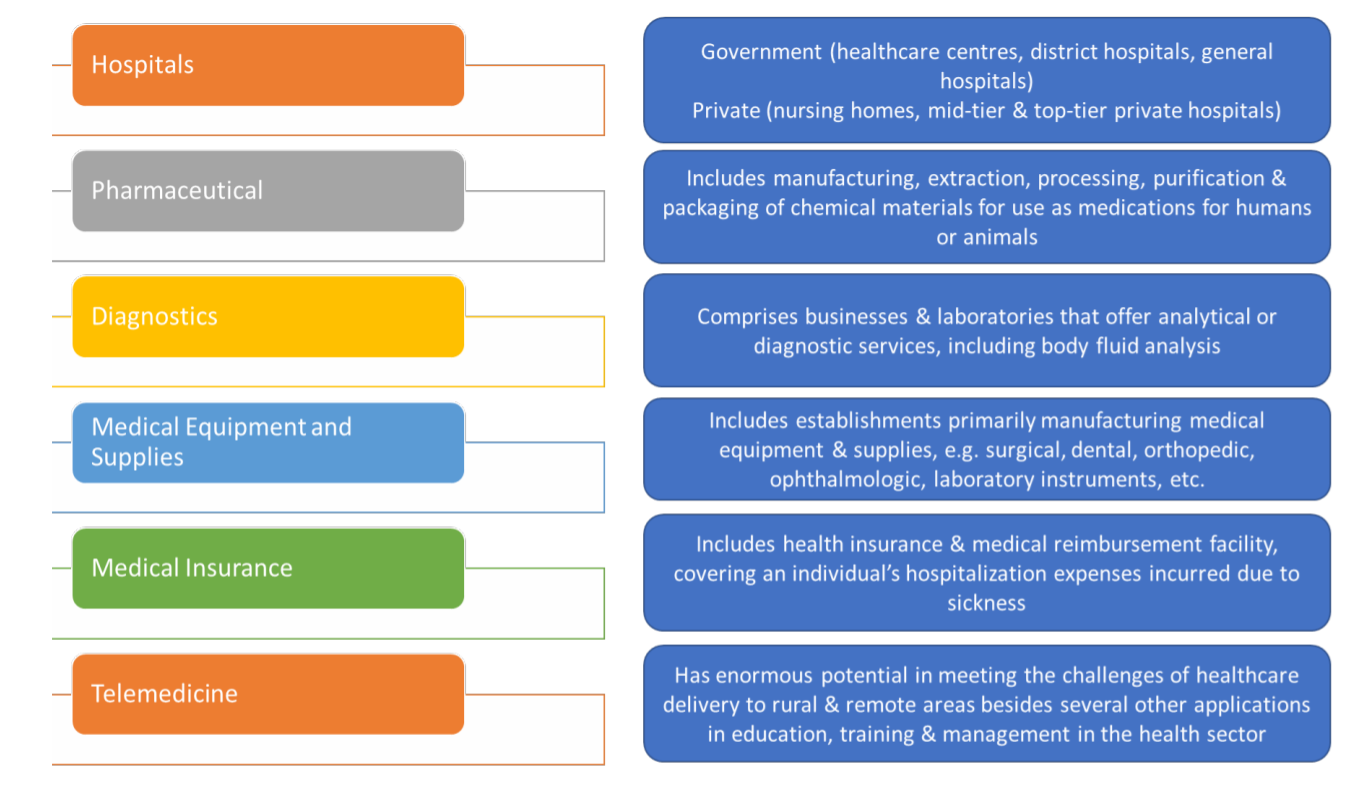COVID has altered the world - with a lasting impact on all industries. Of the few industries coming out stronger from the pandemic, healthcare has emerged as a clear winner. Governments around the world have realized the importance of the healthcare industry and the numbers speak for themselves. With India expected to administer 1 billionth COVID vaccine this month, we take a look at the Healthcare industry.
Overview: Healthcare Industry in India
Healthcare is on the way to become India’s biggest sector, both in terms of revenues and employment (IBEF Report). The market size grew from $140 billion in 2016 to $194 billion in FY20. With the push from the pandemic, it is expected to double to $372 billion by 2022. Both public and private investments are driving the growth - A 45% increase in investments in healthcare startups has been witnessed in the last 2 years, and government healthcare expenditure is expected to be 2.5% of GDP by FY25.
Healthcare has also emerged as a leading job provider. It employed around 4.5 million people in 2017, which is expected to grow to 7.4 million by 2022. The ecosystem impact is significantly higher, with a WHO report indicating that every dollar spent on healthcare results in an additional 0.77 contribution to economic growth due to induced effects.
Major Segments in the Healthcare Industry
India’s healthcare industry comprises hospitals, medical devices and equipment, health insurance, clinical trials, telemedicine, and medical tourism. Niti Aayog has provided a crisp explanation of the different segments in its Investment Opportunities Report for the healthcare industry, which is depicted below.
The hospital industry, accounting for 80% of the total healthcare market, was valued at $62 billion in 2017 and is expected to grow at a CAGR of 16-17% to $132 billion by 2023. While most of the premier hospitals are located in Tier-1 cities, the companies are now expanding to Tier-2 cities. Similar trends are also being observed in government policies, with new AIIMS being introduced in a number of Tier-2 and Tier-3 cities.
Pharmaceuticals is a $ 41 billion industry in itself, expected to grow to $130 billion by 2030. India’s pharmaceutical sector is characterized by low production costs (33% lower than the USA), and production of generic drugs (India accounts for 20% of global generics exports).
Medical Equipment and Diagnostics support the hospital industry by providing medical devices, and diagnostic services respectively. The two sectors are growing at a CAGR of ~20% and are expected to contribute upwards of 15% of total healthcare revenues by 2025.
Important Trends
Growth of Telemedicine - The COVID pandemic brought in new challenges, with patients reluctant to go to hospitals amidst the fear of getting infected. This became a blessing for the Telemedicine Industry. The government launched its free teleconsultation service, e-Sanjeevani, in March 2020. In less than 9 months, the service saw 1 million teleconsultations from 550 districts in the country. Startups like Practo also saw a surge in users. The segment, which had a nascent market size of $800 million in 2019, is expected to grow at a CAGR of 31% and reach $5.5 billion by 2025.
Health Insurance - The percentage of the Indian population covered by health insurance has historically been insignificant. A growing middle class, with increasing healthcare expenditure, is raising the demand. As of FY20, the penetration of private health insurance was less than 10%. PM-JAY, launched by the government under Ayushman Bharat initiative, is envisaged to increase the total penetration to 50%. COVID has also provided a boost to the health insurance sector, with total insurance premium collection reaching $7.9 billion in FY21, a 15% YoY growth. The opportunity is huge, and a lot of startups, as well as foreign insurance companies, are expected to disrupt this segment
Rise in Medical Tourism - India is a popular medical tourism destination - due to the presence of world-class hospitals and skilled medical professionals, superior quality healthcare, low treatment costs in comparison with other countries, credibility in alternative systems of medicine as well as increased global demand for wellness services like Yoga and meditation. The number of tourists arriving on medical visas reached an all-time high of 697k in 2019 before COVID halted all international travel. Despite the setback, this segment is expected to grow at upwards of 25% CAGR.
The healthcare industry is characterized by strong demand (Rising income levels, better awareness, and increasing access to insurance) and attractive opportunities for both public and private sectors. With the government aiming to spend up to 2.5% of GDP on healthcare in the next 5 years, and several startups coming up with innovative solutions, the sky is the limit for Indian healthcare.
Meet the Author
This issue of Funnel Vision has been authored by Satyageet Yadav.
Around the web in 5 stories
Freshworks listed on NASDAQ after a billion-dollar IPO, providing a big boost to the Indian SaaS ecosystem.
Facebook, Instagram and Whatsapp had a global outage for several hours, sending users into a frenzy.
e-pharmacy PharmEasy has reportedly roped in new investors for its $300 million pre-IPO round.
Amazon and Flipkart registered $2.7 billion GMV in the first four days of their festive sales, with demand from Tier-2 and Tier-3 cities driving the momentum.
India is facing major coal supply issues, giving rise to fears of a potential energy crisis in several states.
That’s all for this edition!
Do follow us on Instagram and LinkedIn. Stay connected for insightful articles lined up for this year.




